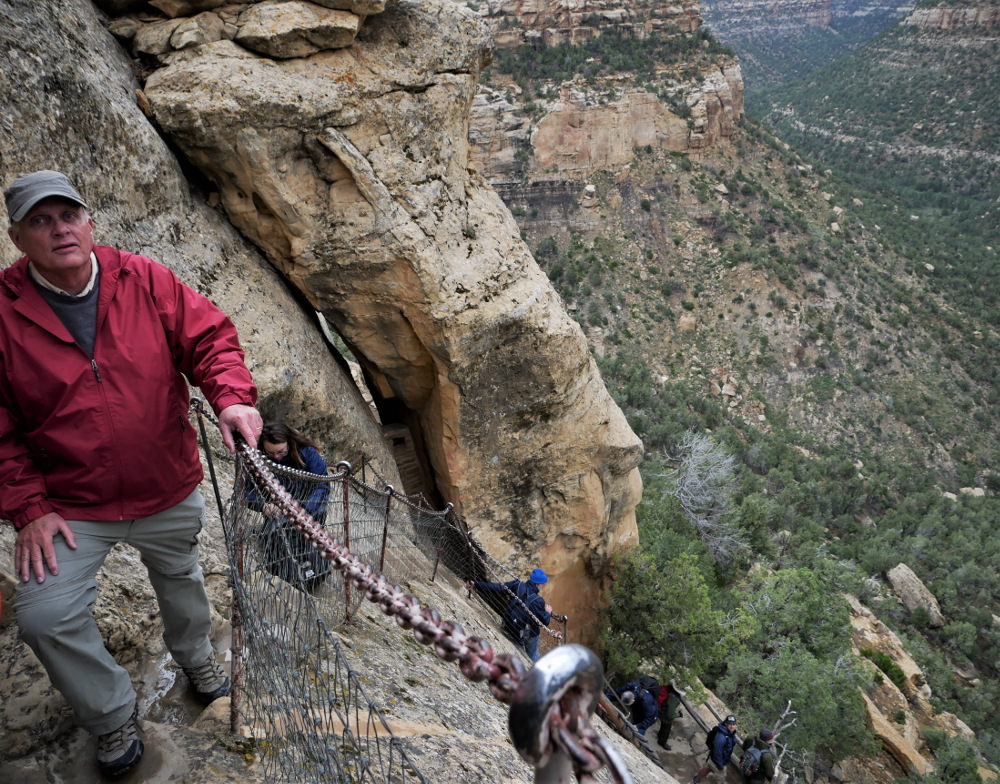The Balcony House cliff dwelling is divided into two main sections, the North Plaza and Kiva Plaza, and consists of 40 rooms and two kivas, or round sunken chambers used for spiritual ceremonies. Balcony House is named after a small balcony of a two-story structure that is the first main structure you see when you enter the alcove. Juniper beams were used for the ceiling separating the first and second stories. They jut out from the canyon-facing wall and were used to create a narrow balcony inhabitants used to traverse from room to room on the second story. Growth rings in the wood have allowed archaeologists to pinpoint the dates the structures were constructed.
Many of the structures' windows doubled as small doorways the inhabitants used to crawl in and out of the rooms, which had an average size of 6 feet by 8 feet. You can peek inside and see into the small rooms, many of which have blackened ceilings from fires used for warmth and cooking. The Ancient Puebloans were smaller than modern man, though about the same size as Europeans of the same time period. The average height of a woman was little more than 5 feet tall and the average man stood about 5 feet 4 inches.
While there are rules discouraging visitors from touching or leaning on the structures of Mesa Verde's cliff dwellings, it doesn't diminish the immersive experience of touring these incredible ruins. Dating back to the early 1900s, archaeologists realized the importance of having visitors be able to physically reach the cliff dwellings and walk among the ruins so they would gain an understanding of the historical and cultural value of these places and support their preservation. Ruins stabilization efforts have been in the works for the last century to detect structural weaknesses and repair deterioration caused by weather, animals, looters and park visitors before the problems lead to a collapse.
Exiting Balcony House is one of the biggest thrills of the entire tour. After crawling through an 18-inch wide, 12-foot long tunnel, you ascend one final wooden ladder and then use footholds carved into the cliff face to make it the rest of the way. There's only a chain railing and a flimsy wire fence between you and a fall off the edge to the canyon floor. It's totally safe, but I could understand how people who have issues with heights could struggle with the final stretch of the tour.
If you are physically able to do a tour of a cliff dwelling, do it. These structures are hundreds of years older than the earliest buildings erected by European settlers in America. They're like ancient penthouses, except instead of overlooking urban sprawl they sit atop a gorgeous canyon. Along with Balcony House, tours are available for Cliff Palace (the largest cliff dwelling in North America with 150 rooms) and Long House (nearly the same size as Cliff Palace) for $5. Spruce Tree House, the third largest and best-preserved cliff dwelling, was closed to tours in 2015 due to rock falls. Step House, located on the Wetherill Mesa on the west side of the park, is the only cliff dwelling visitors can explore for free on a self-guided tour. The tours open in either April or May and close around September.
